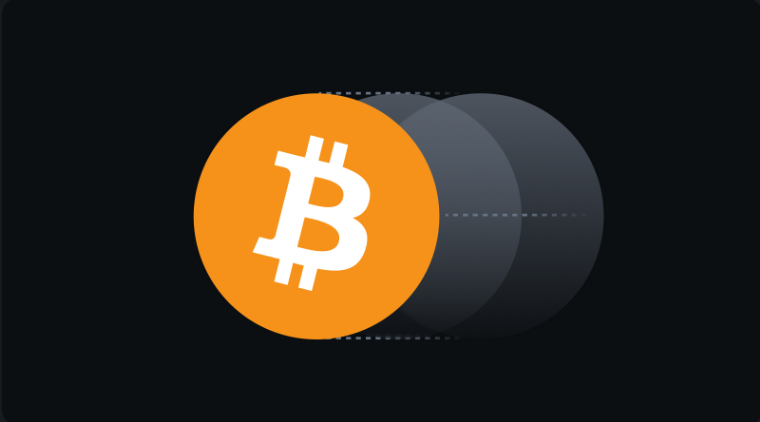
Key Points
Bitcoin Layer 2 networks address scalability challenges, increase transaction speed, and reduce fees. Examples of Bitcoin Layer 2 protocols include the Lightning Network, Rootstock, Stacks, and the Liquid Network.
Layer 2 networks typically employ scaling mechanisms such as state channels, sidechains, and blockchain rollups.
Beyond solving scalability issues, Layer 2 solutions also enable greater programmability, allowing developers to build more decentralized financial services and other Web3 services on the Bitcoin blockchain.
Introduction
As a pioneer in the cryptocurrency space, Bitcoin has become the largest and most popular cryptocurrency by market capitalization. However, despite its leading position, Bitcoin's growing popularity has brought challenges, the most prominent being scalability issues. To address these challenges, the Bitcoin crypto community introduced Bitcoin Layer 2 networks—protocols designed to improve scalability, reduce transaction costs, and unlock new possibilities for the Bitcoin ecosystem.
What is a Bitcoin Layer 2 Network?
Bitcoin Layer 2 networks are protocols built on top of the Bitcoin blockchain. They aim to address performance issues or other limitations faced by the main chain. Layer 2 protocols process transactions off the main chain, offering advantages such as higher scalability, programmability, and support for various DApps with extended functionality.
Why Were Bitcoin Layer 2 Networks Introduced?
Bitcoin was designed to be a decentralized and secure payment system but faces limitations in scalability. During periods of high transaction volume, its average 10-minute block time and 7 transactions per second (TPS) throughput prove insufficient, leading to increased fees and delays.
The limited scripting language of the Bitcoin blockchain also restricts its ability to support complex smart contracts and decentralized applications (DApps). To address these challenges, the concept of Bitcoin Layer 2 networks emerged.
How Do Bitcoin Layer 2 Networks Work?
Layer 2 solutions operate on the principle of off-chain processing, handling transactions outside the main chain to alleviate the burden on the Layer 1 network. By creating off-chain channels, users can conduct multiple transactions without each one being directly added to the blockchain. This off-chain approach not only increases transaction throughput but also minimizes fees, making microtransactions and point-of-sale transactions more feasible.
The mechanisms underpinning Bitcoin Layer 2 networks include state channels, rollups, and sidechains.
-
State Channels
Layer 2 solutions like the Lightning Network use state channels to enable users to create end-to-end encrypted channels for sending and receiving payments. Transactions within these channels occur off-chain, with only the initial and final balances reported to the mainnet, reducing congestion and improving efficiency. -
Blockchain Rollups
Blockchain rollups (including optimistic rollups and zero-knowledge rollups) bundle multiple off-chain transactions into a single piece of data before adding it to the main chain. This method enhances scalability and significantly increases transaction throughput. -
Sidechains
Sidechains are independent blockchains with their own consensus mechanisms, connected to the Layer 1 blockchain via two-way bridges. This connection enables asset transfers between blockchains, supports more Layer 2 solutions, and expands the functionality of the Bitcoin network.
Examples of Bitcoin Layer 2 Solutions
Several Layer 2 solutions have been introduced to the Bitcoin ecosystem, each contributing to improved scalability and new functionalities.
-
Lightning Network
Launched in 2018, the Lightning Network uses state channels to enable microtransactions on top of Bitcoin's Layer 1. It processes multiple transactions off-chain and settles initial and final balances on the main chain, improving speed and reducing costs. -
Rootstock (RSK)
Rootstock is a sidechain that pioneered smart contracts on the Bitcoin blockchain. It allows users to send Bitcoin to the Rootstock network, where it becomes Smart Bitcoin (RBTC) locked in their RSK wallets, increasing transaction speed and reducing costs. -
Stacks Protocol
The Layer 2 blockchain Stacks Protocol (formerly Blockstack) supports smart contracts and DApps on the Bitcoin blockchain. Stacks uses microblocks to increase transaction speed and employs the Proof of Transfer (PoX) mechanism to link transactions to the Bitcoin blockchain. -
Liquid Network
The Liquid Network is a Bitcoin Layer 2 sidechain that uses a two-way peg mechanism to enable Bitcoin transfers back and forth. When BTC is moved to the Liquid Network, it is converted 1:1 into Liquid BTC (L-BTC). The chain also supports the issuance of tokens and other digital assets.
Other Use Cases for Bitcoin Layer 2 Networks Beyond Scalability
Bitcoin Layer 2 solutions not only address scalability but also introduce new use cases and functionalities to the Bitcoin ecosystem.
-
Enhanced Programmability: Layer 2 solutions bring complex smart contract capabilities to the Bitcoin network, supporting decentralized finance (DeFi) services, non-fungible tokens (NFTs), and other Web3 applications.
-
Bitcoin DeFi: Layer 2 solutions like the Lightning Network and Stacks facilitate decentralized finance on the Bitcoin blockchain, enabling asset management, atomic swaps, lending, and trading.
-
Solving the Blockchain Trilemma: Bitcoin Layer 2 networks help overcome the blockchain trilemma—balancing decentralization, security, and scalability. While Bitcoin prioritizes decentralization and security, Layer 2 solutions address scalability.
The Rise of Bitcoin Layer 2 Networks
Recently, Bitcoin Layer 2 networks have gained prominence, with major developments indicating widespread adoption and integration. For example, Binance announced its integration with the Lightning Network in 2023, allowing users to withdraw and deposit Bitcoin using Layer 2 scaling solutions. This highlights the growing importance of Layer 2 solutions across the crypto ecosystem.
Looking ahead, as the space continues to evolve, Bitcoin Layer 2 solutions hold immense potential. The unprecedented growth and innovation in the Bitcoin ecosystem are evident within the crypto community, with Layer 2 networks playing a pivotal role in driving this progress.
Conclusion
The emergence of Bitcoin Layer 2 networks effectively addresses Bitcoin's scalability challenges. These solutions improve transaction speed, reduce fees, and unlock new functionalities. Beyond scalability improvements, Bitcoin Layer 2 solutions enable greater programmability, paving the way for DeFi services, asset management, and more on the Bitcoin blockchain.
















